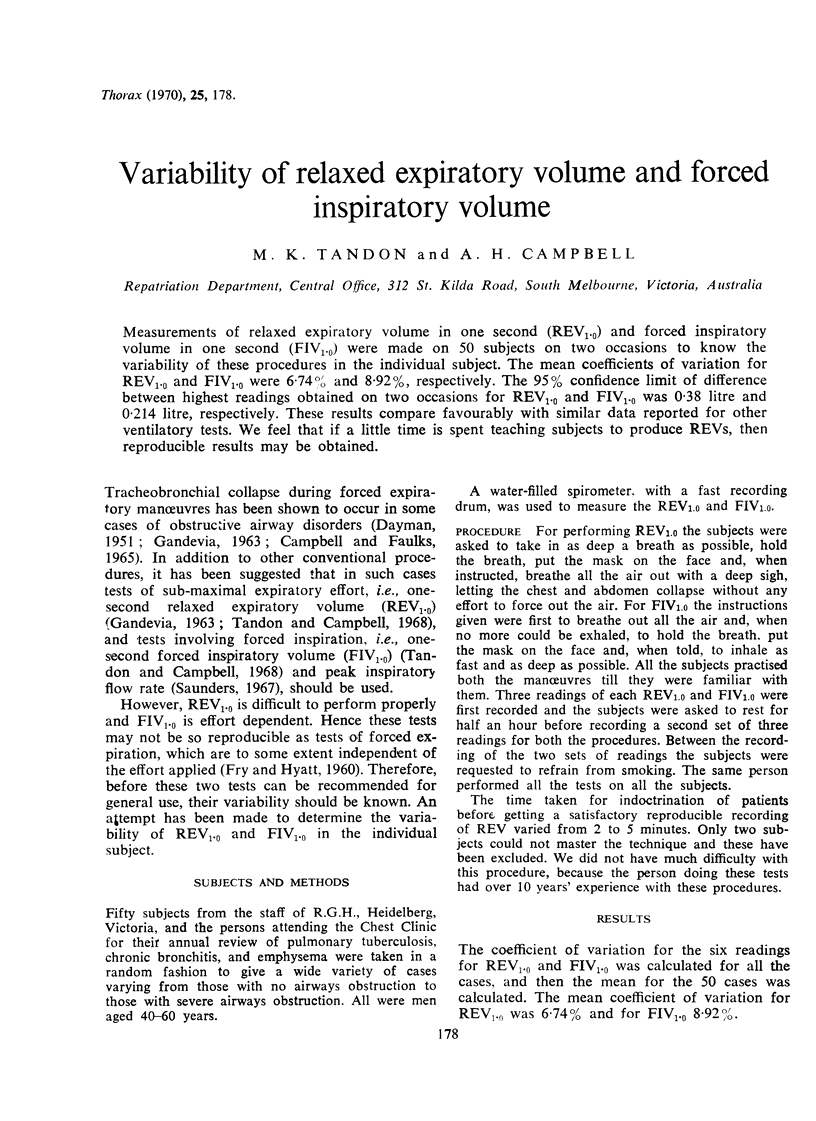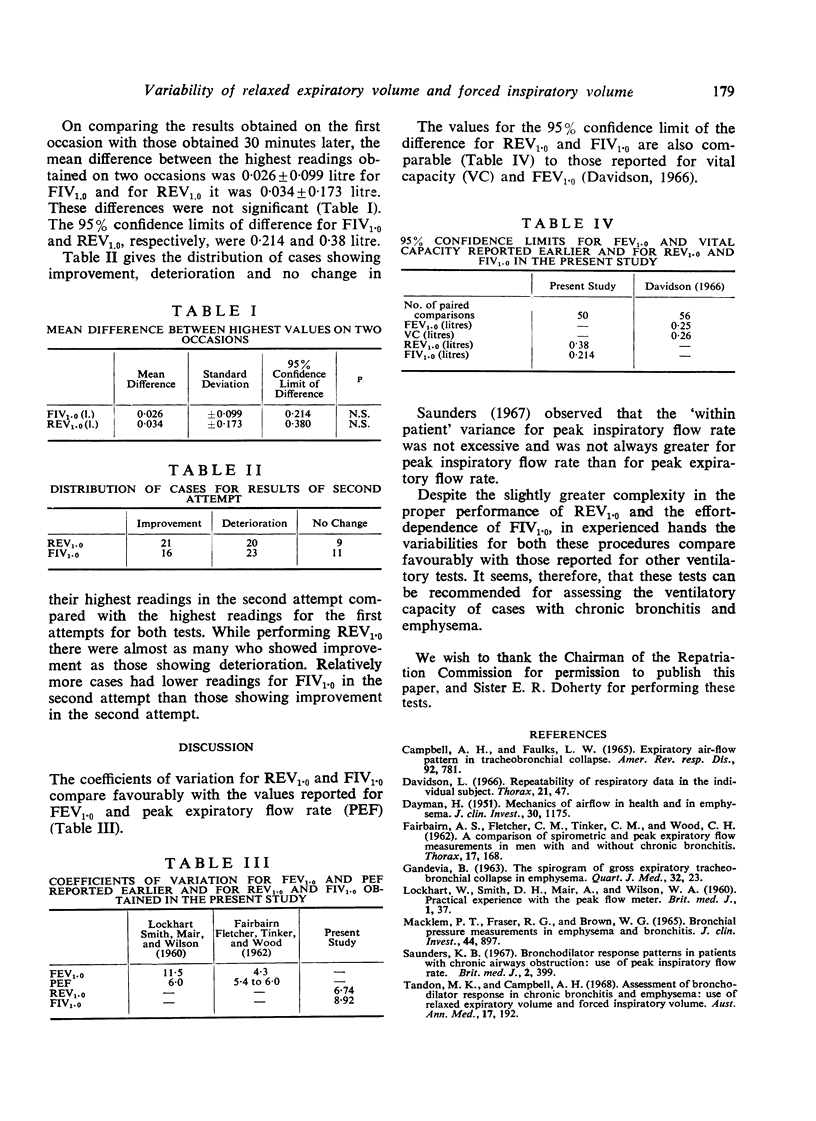Abstract
Measurements of relaxed expiratory volume in one second (REV1·0) and forced inspiratory volume in one second (FIV1·0) were made on 50 subjects on two occasions to know the variability of these procedures in the individual subject. The mean coefficients of variation for REV1·0 and FIV1·0 were 6·74% and 8·92%, respectively. The 95% confidence limit of difference between highest readings obtained on two occasions for REV1·0 and FIV1·0 was 0·38 litre and 0·214 litre, respectively. These results compare favourably with similar data reported for other ventilatory tests. We feel that if a little time is spent teaching subjects to produce REVs, then reproducible results may be obtained.
Full text
PDF

Selected References
These references are in PubMed. This may not be the complete list of references from this article.
- Campbell A. H., Faulks L. W. Expiratory air-flow pattern in tracheobronchial collapse. Am Rev Respir Dis. 1965 Nov;92(5):781–791. doi: 10.1164/arrd.1965.92.5.781. [DOI] [PubMed] [Google Scholar]
- DAYMAN H. Mechanics of airflow in health and in emphysema. J Clin Invest. 1951 Nov;30(11):1175–1190. doi: 10.1172/JCI102537. [DOI] [PMC free article] [PubMed] [Google Scholar]
- Davidson L. Repeatability of respiratory data in the individual subject. Thorax. 1966 Jan;21(1):47–47. doi: 10.1136/thx.21.1.47. [DOI] [PMC free article] [PubMed] [Google Scholar]
- FAIRBAIRN A. S., FLETCHER C. M., TINKER C. M., WOOD C. H. A comparison of spirometric and peak expiratory flow measurements in men with and without chronic bronchitis. Thorax. 1962 Jun;17:168–174. doi: 10.1136/thx.17.2.168. [DOI] [PMC free article] [PubMed] [Google Scholar]
- GRANDEVIA B. The spirogram of gross expiratory tracheobronchial collapse in emphysema. Q J Med. 1963 Jan;32:23–31. [PubMed] [Google Scholar]
- LOCKHART W., SMITH D. H., MAIR A., WILSON W. A. Practical experience with the peak flow meter. Br Med J. 1960 Jan 2;1(5165):37–38. doi: 10.1136/bmj.1.5165.37. [DOI] [PMC free article] [PubMed] [Google Scholar]
- MACKLEM P. T., FRASER R. G., BROWN W. G. BRONCHIAL PRESSURE MEASUREMENTS IN EMPHYSEMA AND BRONCHITIS. J Clin Invest. 1965 Jun;44:897–905. doi: 10.1172/JCI105206. [DOI] [PMC free article] [PubMed] [Google Scholar]
- Saunders K. B. Bronchodilator response patterns in patients with chronic airways obstruction: use of peak inspiratory flow rate. Br Med J. 1967 May 13;2(5549):399–402. doi: 10.1136/bmj.2.5549.399. [DOI] [PMC free article] [PubMed] [Google Scholar]


